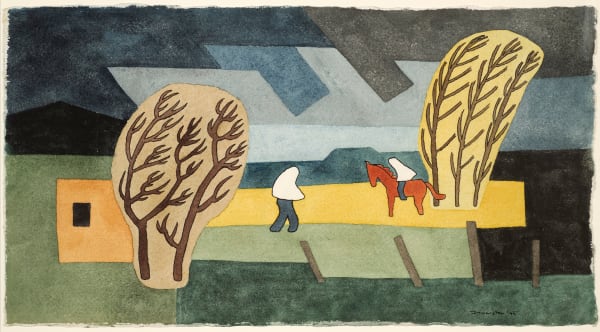Douglas Denniston US, 1922-2004
"Douglas Denniston's prolific oeuvre over sixty years as a painter in the American Southwest, continually expanded both conceptual and aesthetic limits."- Aaron Payne
In 1945, Douglas Denniston arrived in New Mexico and immediately became immersed in the Santa Fe/Taos Art Movement. Informed by his studies with Raymond Jonson and his involvement with the Transcendental Painting Group, which he founded with Emil Bisttram in 1938, Denniston's New Mexico abstractions were devoid of clear references to figures or landscapes, instead exhibiting a vibrant palette of incandescent colors and shapes.
Denniston's style during this period combines modernism with the traditional patterns and colors of the American Southwest, exploring .a range of materials and processes.
Douglas Denniston has received critical recognition, sharing wall space with colleagues and friends such as Richard Diebenkorn, Paul Harris,Agnes Martin, Enrique Montenegro, and Adja Yunkers. Exhibits from this period included MOMA,The Metropolitan Museum of Art, and the Butler Institute of American Art.


